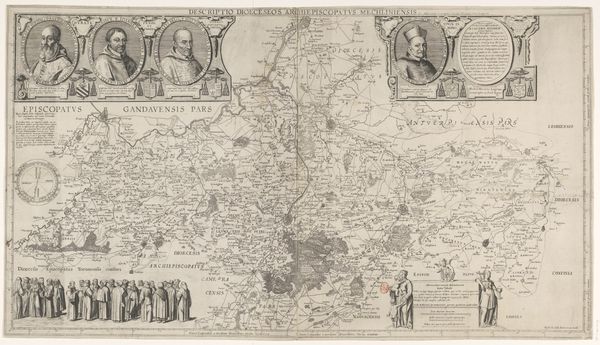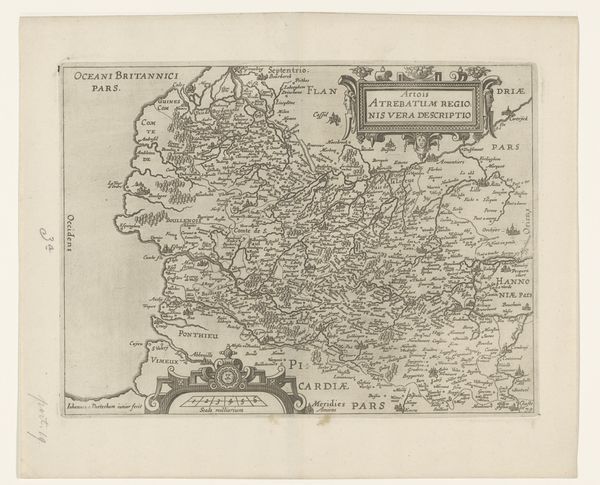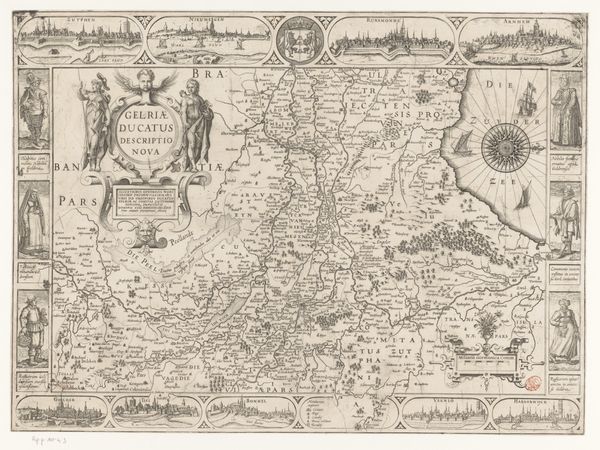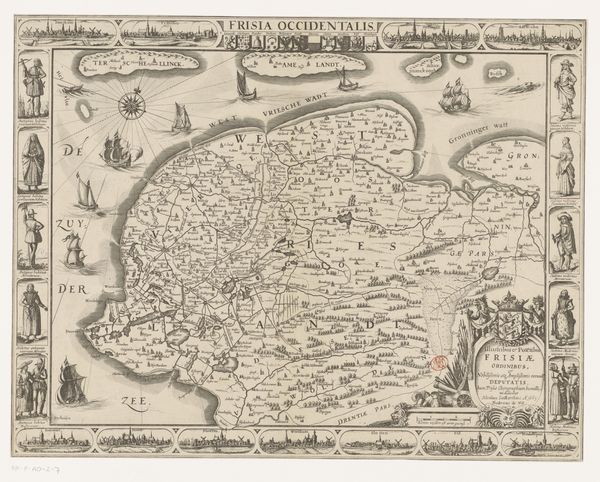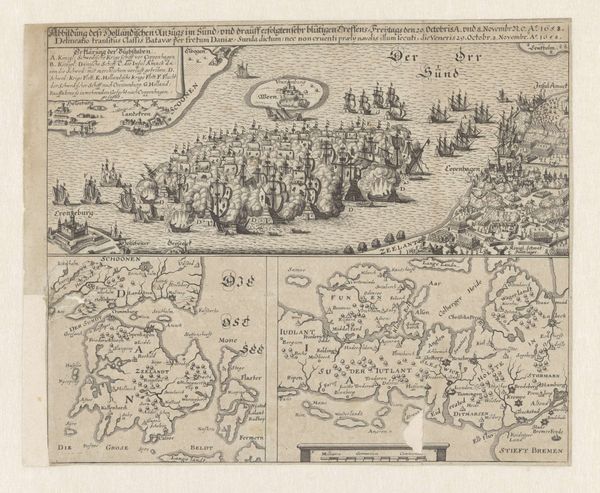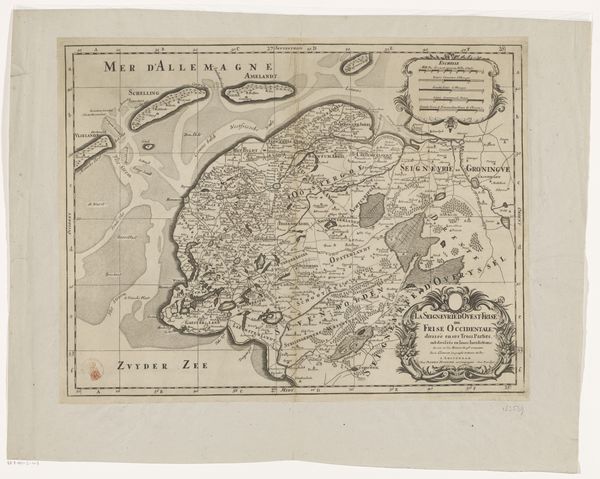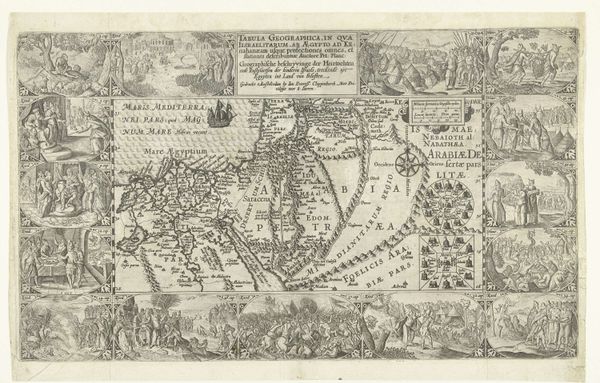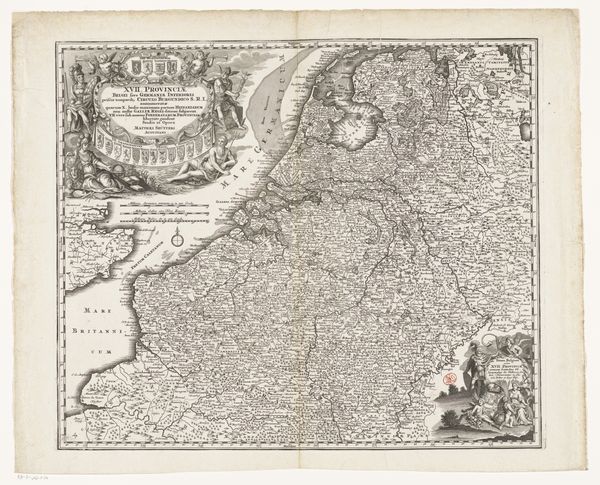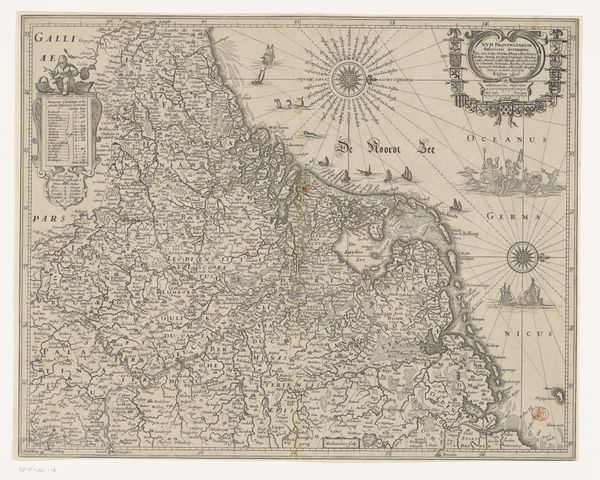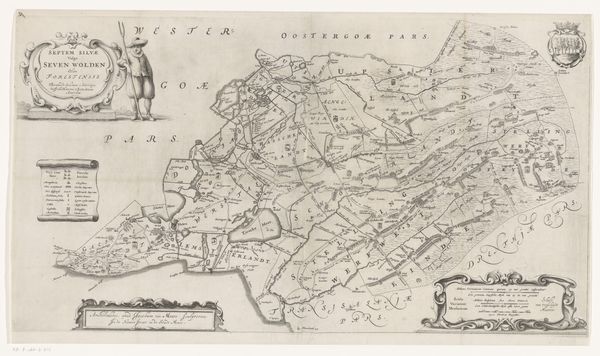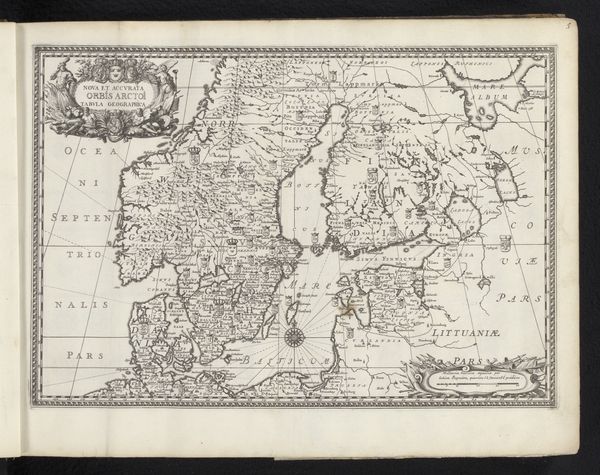
drawing, print, paper, engraving
#
drawing
#
pen drawing
# print
#
landscape
#
paper
#
line
#
northern-renaissance
#
engraving
Dimensions: height 381 mm, width 498 mm
Copyright: Rijks Museum: Open Domain
Curator: Right, let’s discuss Pieter van der Keere’s "Historische kaart van de Nederlanden" from 1617, a wonderfully detailed engraving on paper now held here at the Rijksmuseum. Editor: My first impression? Claustrophobic detail! It feels like every single tree and house is painstakingly accounted for. Makes me wonder about the obsession with control of landscape—but in a charming way. Curator: Indeed. Mapmaking during this period served many purposes beyond mere navigation. Consider that these weren't just geographic tools but also instruments of power. Van der Keere’s map provided a comprehensive view of the region to its rulers. Editor: Ah, right, power. But also maybe an early form of hyperrealism? I mean, look at those ships sailing on the left. They are quite beautiful and elaborate, even if the land looks somewhat compressed, bursting at its borders, it must reflect not just a geographical representation but a kind of boast too. “Look what we have!” Curator: Precisely. The ornate cartouches and figures framing the map are not accidental. They legitimize authority and imply the land’s historical significance. Notice also the use of Latin – projecting scholarship, wisdom. This isn't folk art. Editor: Folk art wants to be liberated by time while this piece craves status and validation through control. It’s like a real estate developer's fever dream. How fascinating that lines etched into paper could convey something as weighty as national identity, wouldn’t you say? Curator: Yes. But keep in mind that maps can construct identities and hierarchies and reflect a desired vision more than strict reality. This historical cartography serves to unite separate entities on paper while simultaneously signaling territory ripe for control. Editor: That shifts things again, doesn't it? Control versus just creating a sort of self-important beauty out of knowing what’s in your backyard. What you make clear for me is this isn't about orientation, is it? It's orientation in a totally different sense. Curator: Precisely. The map projects influence through knowledge, history, and even a visual claim to land ownership in this complicated historical context. Editor: Well, thinking about that, it’s almost impossible to just look at it innocently as a decorative or quaint antique print after you’ve pulled back its deeper social and historical context. But knowing makes appreciating it even more intense. Curator: For me too. Looking more deeply at a piece makes one want to always push the envelope with subsequent viewings.
Comments
No comments
Be the first to comment and join the conversation on the ultimate creative platform.
